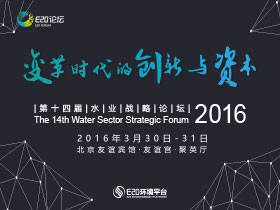"13th Five-Year Plan" sludge treatment to release huge business opportunities sludge treatment industry profit model analysis
The promulgation of the "Water Ten" last year, the state has requirements for sludge treatment and disposal in facility construction and disposal rate, there is no doubt. In 2010, less than 10% of the sludge in China was treated and disposed of in terms of sanitary landfill, land use, incineration or building materials utilization, and most of the rest were not standardized treatment and disposal. In the past five years, the sludge treatment and disposal rate has not exceeded 20%.

The "Water Ten" provisions prohibit the treatment and disposal of substandard sludge into cultivated land. Major concerns include pathogen transmission, chemicals, burning seedlings, pests and diseases, weed control, and foul odor. Sludge composting used to be an economical way of resource utilization. It is a biochemical process to decompose and decompose organic matter in organic waste into fertilizer through microbial fermentation. During the fermentation process, biodegradable organic matter is transformed into relatively stable humus material. However, with the aggravation of environmental pollution and the deposition of heavy metals, direct composting of municipal sludge is obviously not desirable. Under the current conditions, urban sludge must be treated harmlessly or under the premise of ensuring environmental safety, that is, under stable and harmless conditions, in order to further consider its resource utilization. The treatment and disposal of municipal sludge can pursue resources and economic benefits, but the harmfulness should be the primary purpose.
Now, the "13th Five-Year Plan" environmental protection measures, it is expected that the recent sludge treatment of the national battle, into the "white heat" is a sure thing. Sludge treatment and disposal is an indispensable link in the reduction of water pollutants, which is showing huge business opportunities, and the market size of sludge treatment in the future will reach 80 billion yuan. Different sludge disposal routes will have different process combinations, but various technical routes will ultimately be tested by the environment, economy and market. The construction mode and profitability of the treatment project are as follows: 1. Analysis of the construction mode of the sludge treatment project
The "2015-2020 China Sludge treatment and disposal in-depth research and investment strategic planning Analysis Report" of the Research Institute pointed out that: at present, the investment in sludge composting projects mainly comes from national debt, foreign government loans, etc., a small number of enterprises are self-funded, and the construction is mainly dominated by the existing sewage treatment plant or the management department of the sewage plant, and there are two construction modes:
First, it is built in a sewage treatment plant as a supporting facility of the sewage plant, such as the sludge composting project of the Tangshan West suburb sewage treatment plant, the sludge composting project of the Taiyuan River Northwest central sewage treatment plant, and the sludge harmless project of Yantai Laishan sewage treatment plant. The advantage of this model is that the sewage plant and the sludge composting project are closely connected, and the public supporting facilities can be shared and investment can be saved. The sludge transport distance is close, saving transportation costs. However, because the sludge composting project needs a certain area, the sewage plant needs to reserve enough land to implement; In addition, the sludge composting project is limited by the scale and cannot play the scale economy, so that the utilization rate is also affected.
The second is to build a sludge composting project independent of the sewage plant to serve one or several sewage treatment plants, such as Beijing Daxing Panggezhuang sludge composting project for Beijing Gaobidian sewage treatment plant supporting service, Luoyang sludge disposal site project for Luoyang 瀍 east sewage plant and Jianxi sewage plant supporting service. The advantage of this model is that the new planning site selection gets rid of the limitations of the disposal scale and truly builds on demand, especially for the trend of the continuous expansion of the scale capacity of China's sewage treatment plants, and the centralized construction of sludge disposal sites is convenient for project approval and future operation management. Second, sludge treatment industry profit model analysis
The profit model of public utilities is different from that of general manufacturing industry. The product price of manufacturing industry is affected by supply and demand and fluctuates frequently. Therefore, both price and capacity expansion are very important driving factors. Public utilities are public goods, prices and sales are dominated by the government, such as sludge treatment and other environmental protection products are not purchased by individuals or units, the need for government guidance or forced promotion, the price of public goods is often through "cost + reasonable benefits" to develop. The industry mainly adopts different sludge treatment project operation models to achieve the purpose of investment and financing, and finally achieve profit. These modes are discussed below:
Chart 1: Profit model analysis of sewage sludge treatment industry





